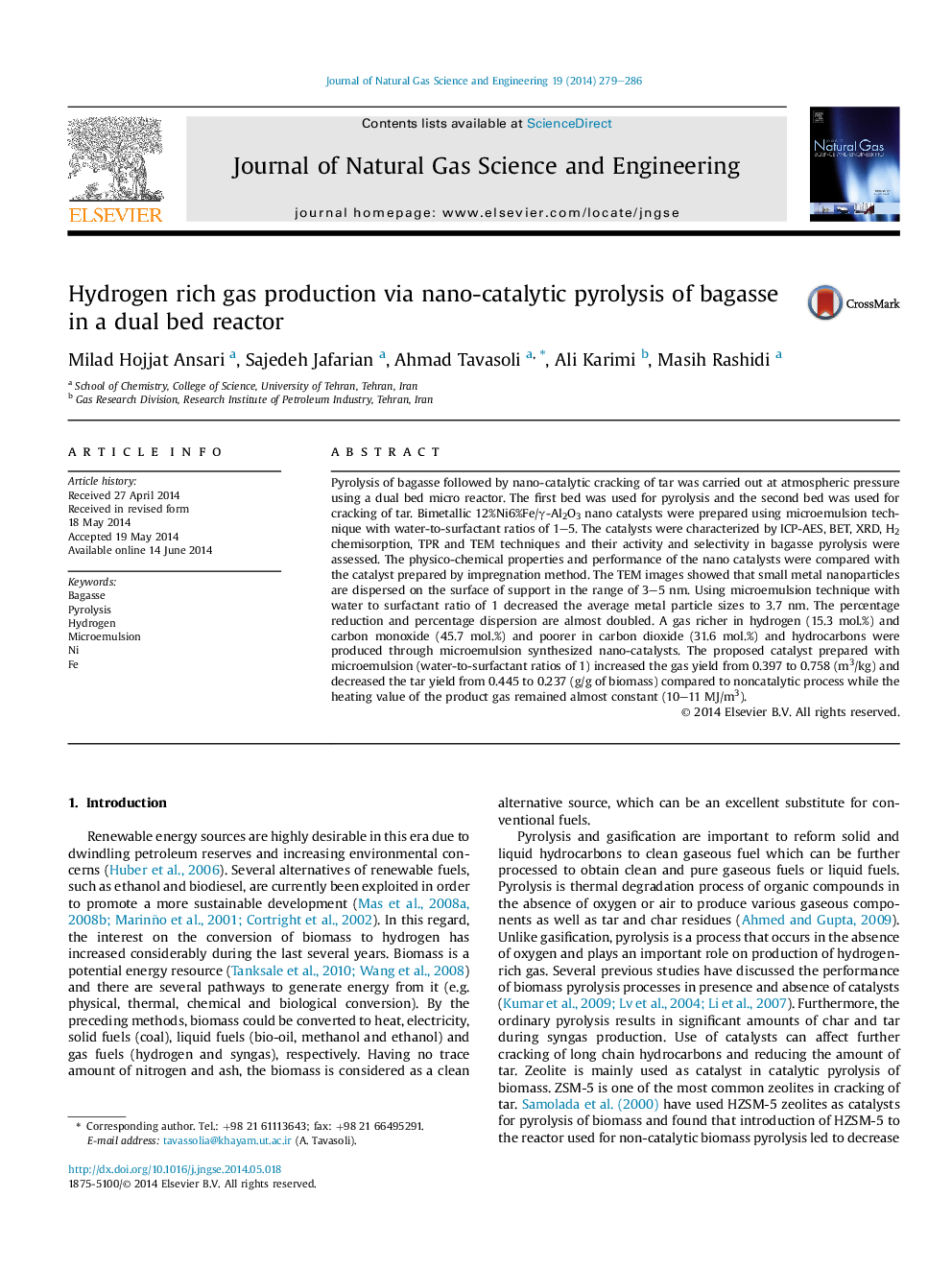| کد مقاله | کد نشریه | سال انتشار | مقاله انگلیسی | نسخه تمام متن |
|---|---|---|---|---|
| 1757996 | 1523021 | 2014 | 8 صفحه PDF | دانلود رایگان |
• Using microemulsion increased the total gas yield to 0.758 m3/kg.
• Using microemulsion decreased the tar yield to 0.237 (g/g of biomass).
• Microemulsion technique increased the H2 mole fraction to 0.153.
• Microemulsion technique increased the CO mole fraction to 0.557.
Pyrolysis of bagasse followed by nano-catalytic cracking of tar was carried out at atmospheric pressure using a dual bed micro reactor. The first bed was used for pyrolysis and the second bed was used for cracking of tar. Bimetallic 12%Ni6%Fe/γ-Al2O3 nano catalysts were prepared using microemulsion technique with water-to-surfactant ratios of 1–5. The catalysts were characterized by ICP-AES, BET, XRD, H2 chemisorption, TPR and TEM techniques and their activity and selectivity in bagasse pyrolysis were assessed. The physico-chemical properties and performance of the nano catalysts were compared with the catalyst prepared by impregnation method. The TEM images showed that small metal nanoparticles are dispersed on the surface of support in the range of 3–5 nm. Using microemulsion technique with water to surfactant ratio of 1 decreased the average metal particle sizes to 3.7 nm. The percentage reduction and percentage dispersion are almost doubled. A gas richer in hydrogen (15.3 mol.%) and carbon monoxide (45.7 mol.%) and poorer in carbon dioxide (31.6 mol.%) and hydrocarbons were produced through microemulsion synthesized nano-catalysts. The proposed catalyst prepared with microemulsion (water-to-surfactant ratios of 1) increased the gas yield from 0.397 to 0.758 (m3/kg) and decreased the tar yield from 0.445 to 0.237 (g/g of biomass) compared to noncatalytic process while the heating value of the product gas remained almost constant (10–11 MJ/m3).
Journal: Journal of Natural Gas Science and Engineering - Volume 19, July 2014, Pages 279–286
